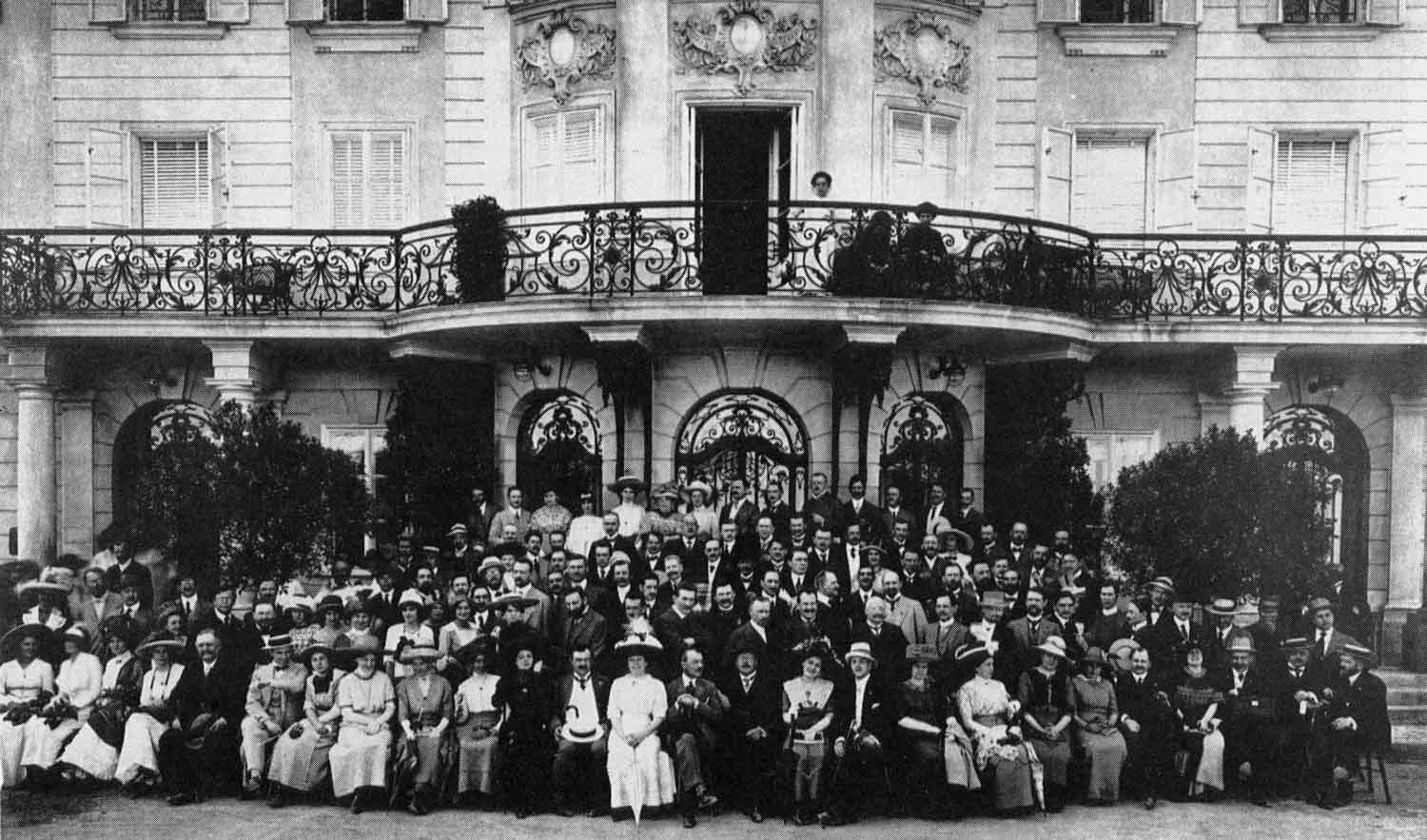The role of the Werkbund (Association of Craftsmen) within the reform movement
The Deutscher Werkbund (German Association of Craftsmen) was founded in 1907. It saw itself as part of the ‘new German’ movement for a cultural and socio-political reorientation. The association’s purpose was to ‘refine industrial work’. The intention was to blend industrial production and old craft production methods with a new design. The goal was a design that would both use the new technical possibilities and be aesthetically pleasing and of high quality. The new aesthetic was particularly evident in the simplicity of the forms without any decorative ornaments. This ‘modern style of our time’ was to not only shape industrial production, but also objects used in everyday life, including architecture.

The Deutscher Werkbund (German Association of Craftsmen) during its annual conference in Vienna in 1912.
Source: Werkbundarchiv (ed.): Hermann Muthesius im Werkbund-Archiv, Exhibition catalogue, Martin-Gropius-Bau, Berlin 1990.
Two times twelve in Munich: foundation of the Deutscher Werkbund (German Association of Craftsmen)
Twelve artists and twelve businesses founded the Deutscher Werkbund (German Association of Craftsmen) in Munich on 5 October 1907. It had much in common with the Gartenstadtgesellschaft Hellerau mbH (Hellerau Garden City Society), which was established in 1908. Both reform associations saw themselves as part of the ‘new German’ movement initiated by the liberal politician Friedrich Naumann, which stood for a cultural and socio-political reorientation based on social liberalism. Richard Riemerschmid and Karl Schmidt were also among the founding members. Since both were key players in Hellerau Garden City, it is also clear how close the ties were between the garden city and the Deutscher Werkbund (German Association of Craftsmen) during this period.
‘Refining industrial work’
The purpose of the Werkbund (Association of Craftsmen) was ‘refining industrial work’. The background to this claim was that traditional craft skills were in danger of being lost through industrial mass production. On the other hand, technical innovations simplified production so more could be produced in less time. The Werkbund (Association of Craftsmen) therefore wanted to find an answer to how industrial production and old craft production methods could be blended. The goal was a design that would both use the new technical possibilities and be aesthetically pleasing, as Karl Schmidt had done with his machine-made furniture range, for example. However, the association was first and foremost also aimed at political networking and collaboration.
Quality in the ‘modern style of our time’
In the Werkbund’’s (Association of Craftsmen) numerous publications and exhibitions, it was repeatedly emphasised that there was a loss of quality in arts and crafts. This supposed deterioration was to be countered with a design approach that was adapted to the conditions of machine production. The new aesthetic was therefore particularly evident in the simplicity of the forms without any decorative ornaments. Under the motto Vom Sofakissen zum Städtebau (From Sofa Cushion to Urban Design), the aim was to permanently establish this ‘modern style of our time’ in the sense of Hermann Muthesius’ ideas, not only for industrial production but also for objects used in everyday life and even architecture. In addition, an amendment to the Copyright Act made it possible to protect artists’ designs from imitation for the first time, making them legally an equal partner to the industrial manufacturer.
The early years
Wolf Dohrn was appointed the first managing director of the Werkbund (Association of Craftsmen) and in the following years he played a major role in the planning and construction of Hellerau Garden City. The Deutscher Werkbund (German Association of Craftsmen) therefore moved its head office from Munich to Dresden in 1909 and shortly afterwards to Hellerau. One year later, Wolf Dohrn gave up his leading position in the Werkbund (Association of Craftsmen) to devote himself exclusively to his favourite project, planning the future Festspielhaus (Festival Theatre). His successor was the travel writer and publicist Alfons Paquet, who lived in Hellerau from 1910 to 1914. With the appointment of Ernst Jäckh as managing director of the Werkbund (Association of Craftsmen), the company’s head office was moved to Berlin in 1914. As a result, the Werkbund (Association of Craftsmen) not only separated from Hellerau Garden City in organisational terms but also conceptually and became an organisation with an increasingly international focus.
